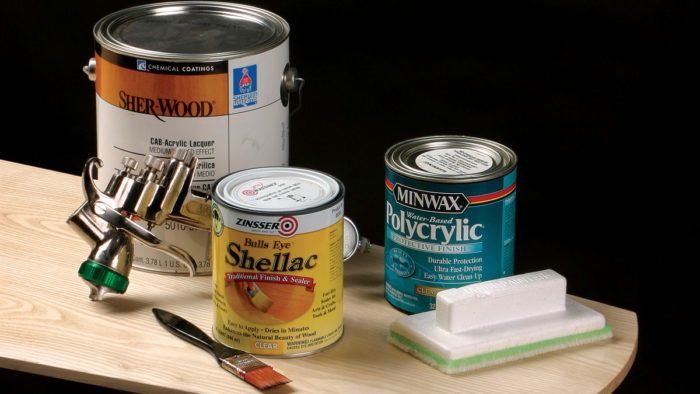The Clearest of Finishes
Several products will preserve the natural color of wood or paint.

Synopsis: Sometimes it’s important for a clear coat of finish to be completely clear, without the yellow or amber cast of most “clear” finishes. Finishing expert Peter Gedrys selected three popular finishes that are known for their clarity: water-based finishes, clear shellac, and a solvent-based lacquer. He explains the pros and cons of each finish, including the degree of protection each finish can be expected to give, the level of skill necessary to apply it well, and the best tools for the job.
The yellow or amber cast of most “clear” finishes often enhances the final appearance of a finished piece. However, sometimes you want a clear coat to be just that, as clear as possible with minimal alteration to the color of the project. You may want to preserve the just-planed look of maple or pine, or to keep the distinctive appearance of wood that has been bleached or pickled. If you have found the perfect blue for a built-in bookcase, you don’t want a coat of varnish with a typical yellow cast reminding you that blue plus yellow equals green.

The earliest demand for very clear topcoats came from artists who didn’t want their works viewed through a yellow film. They used clear resins such as mastic and sandarac dissolved in alcohol. Modern chemists have greatly improved and expanded the choices. The three I’ve selected for their clarity are water-based finishes, clear shellac, and a solvent-based lacquer. Each has pros and cons, but the first question to consider is the degree of protection you expect. Does the finish have to resist heat and abrasion? Will it get physical abuse or is it purely decorative? Think about your finishing skills and the tools available to you—all three finishes can be sprayed, but the shellac and lacquer should be sprayed in an explosion-proof booth.
Water-based finishes are very clear
An oddity a generation ago, waterbased finishes are widely available today. Spurred by environmental laws, most major coatings manufacturers now offer some type of water-based finish, and some specialize in them. But amateur woodworkers have been slow to accept these finishes. One reason is their complete lack of color; many woodworkers are used to the finish warming the wood’s appearance. The application of water-based finish also requires a slight change in technique from the methods used to brush on oil-based finishes. However, if you want a totally clear finish, it is worth learning how to apply a water-based coating.
 From Fine Woodworking #184
From Fine Woodworking #184
For the full article, download the PDF below:
Fine Woodworking Recommended Products

Diablo ‘SandNet’ Sanding Discs


Foam Brushes








Log in or create an account to post a comment.
Sign up Log in